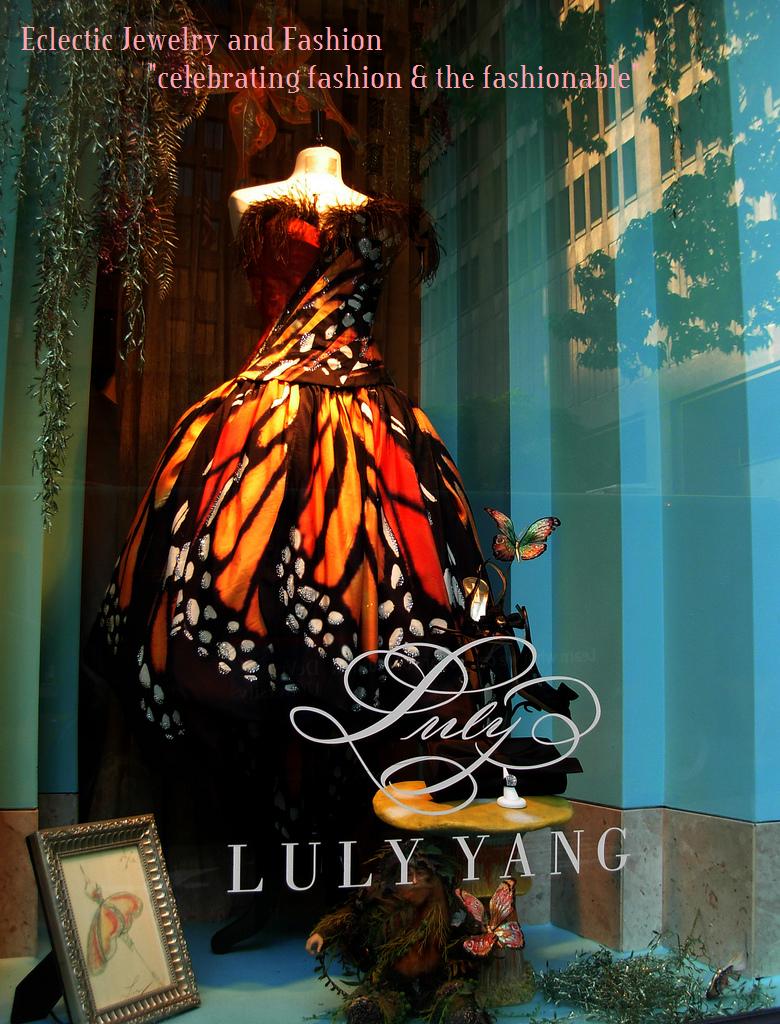The kimono is undoubtedly one of the most fascinating traditional garments of the Japanese wardrobe. Yet the traditional robe, famous for its history, fine silks and bright colours, has proved throughout the decade of great inspiration to many generations of designers who, showing veneration, but also a healthy dose of irreverence, disassembled and reassembled the kimono, radically reinventing it.
“Kimono Fusion”, an exhibition recently organised at Stockholm's Östasiatiska Museet tried to explore the connections between more traditional kimonos and the urban wear or avant-garde designs that they inspired.
The exhibition opened with a series of vintage obi sashes from 1910 to 1970 employed to create oversized revolving lampshades hanging from the ceiling. The hand-embroidered silk obis displayed weaving techniques, silk threads and hand dying procedures, showing different degrees of wear and tear and revealing how such a vital part of a kimono can still be beautiful when and if it is employed in a different context.
The second part of the exhibition focused instead on a comparison between vintage kimonos and modern reinterpretations from various subcultures inspired by kimonos and by younger generations who like mixing traditional garments with modern trends.
Silk kimonos of the “furisode” type from the 1960s featuring white and red chrysanthemums on an orange background, in shocking pink with black motifs, with circle patterns and bamboo motifs or embroidered birds and rivers - traditional symbols of long life - and dyed with the yuzen or shibori technique, were juxtaposed with Shin Tanaka's bubbly “Street Origami”, manga influenced paper toys clad in clothes inspired by kimono patterns. Cosplay lilac wigs were matched with bright yellow or pink kanzashi hair ornaments, the traditional decorations for young geisha apprentices, and presented next to Japanese wooden geta and zori clogs, obi sashes with dragon motifs and Noh theatre masks with extremely colourful eyelashes.
Ample space was dedicated to self-taught designer Takuya Angel, who usually reinterprets in a more extreme way kimonos, reusing vintage fabrics to create jackets and trousers, corsets and belts, accessorised with paw-shaped i-Pod or mobile phone bags, leg warmers and protections inspired by samurai wear and plastic face masks. While Angel's designs incarnate the “kowakawaii” (yucky-cute) concept, Shojono Tom's creations such as “753 Kimono” are to be considered more as bizarre collage-like installations, through which the illustrator and set designer recreates fantastically visionary kimonos for kids.
The third and last part of the exhibition was dedicated instead to more conceptual pieces such as Kunihiko Morinaga's designs for label Anrealage and Suzuki Takayuki's pieces. Morinaga's slogan is “God is in the details”: indeed the designer tries to explore the extraordinary in ordinary things, using unusual details in ordinary clothes. Takayuki's tattered, torn and threadbare pieces from his collection “Tangled” are instead suspended between fashion and art and are conceived as an expedient used by the designer to analyse the themes of fragility, entrapment and confusion.
“A novelist can’t be without a kimono and pen”, one of the character in Natsuki Takaya's manga Fruits Basket, states in one of Takaya's stories. Yet, wandering around the Östasiatiska Museet, it was easy to think that it's a fashion designer rather than a novelist who can't be without a kimono and a pen.
(Dazed & Confused magazine)
What a spectacular exhibition as well as article. My only wish is that I could have been there to see those fabulous pieces up close!

No comments:
Post a Comment